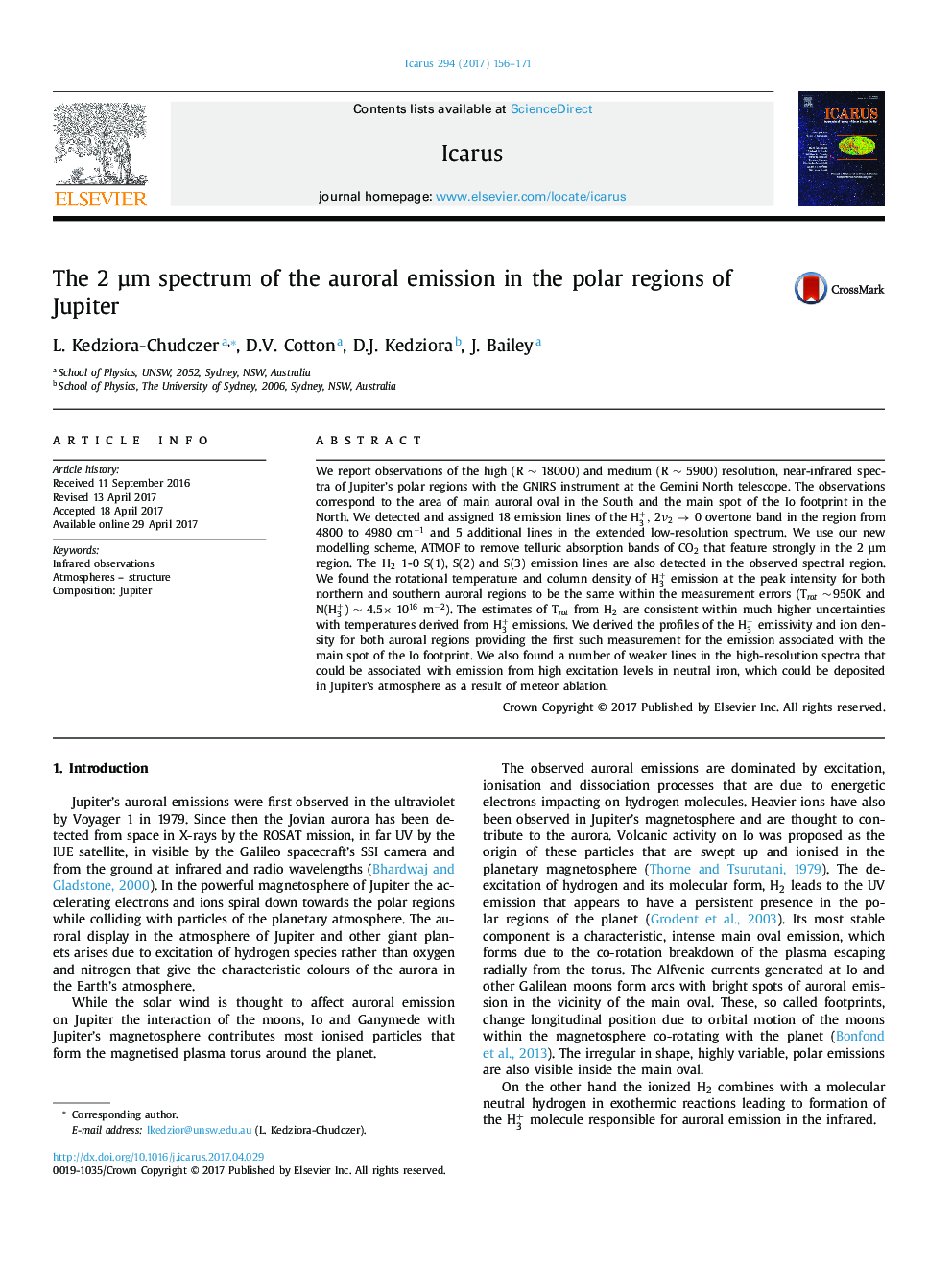| Article ID | Journal | Published Year | Pages | File Type |
|---|---|---|---|---|
| 5487386 | Icarus | 2017 | 16 Pages |
Abstract
We report observations of the high (R â¼Â 18000) and medium (R â¼Â 5900) resolution, near-infrared spectra of Jupiter's polar regions with the GNIRS instrument at the Gemini North telescope. The observations correspond to the area of main auroral oval in the South and the main spot of the Io footprint in the North. We detected and assigned 18 emission lines of the H3+, 2ν2 â 0 overtone band in the region from 4800 to 4980 cmâ1 and 5 additional lines in the extended low-resolution spectrum. We use our new modelling scheme, ATMOF to remove telluric absorption bands of CO2 that feature strongly in the 2 µm region. The H2 1-0 S(1), S(2) and S(3) emission lines are also detected in the observed spectral region. We found the rotational temperature and column density of H3+ emission at the peak intensity for both northern and southern auroral regions to be the same within the measurement errors (Trot â¼â950K and N(H3+) â¼ 4.5à 1016 mâ2). The estimates of Trot from H2 are consistent within much higher uncertainties with temperatures derived from H3+ emissions. We derived the profiles of the H3+ emissivity and ion density for both auroral regions providing the first such measurement for the emission associated with the main spot of the Io footprint. We also found a number of weaker lines in the high-resolution spectra that could be associated with emission from high excitation levels in neutral iron, which could be deposited in Jupiter's atmosphere as a result of meteor ablation.
Keywords
Related Topics
Physical Sciences and Engineering
Earth and Planetary Sciences
Space and Planetary Science
Authors
L. Kedziora-Chudczer, D.V. Cotton, D.J. Kedziora, J. Bailey,
